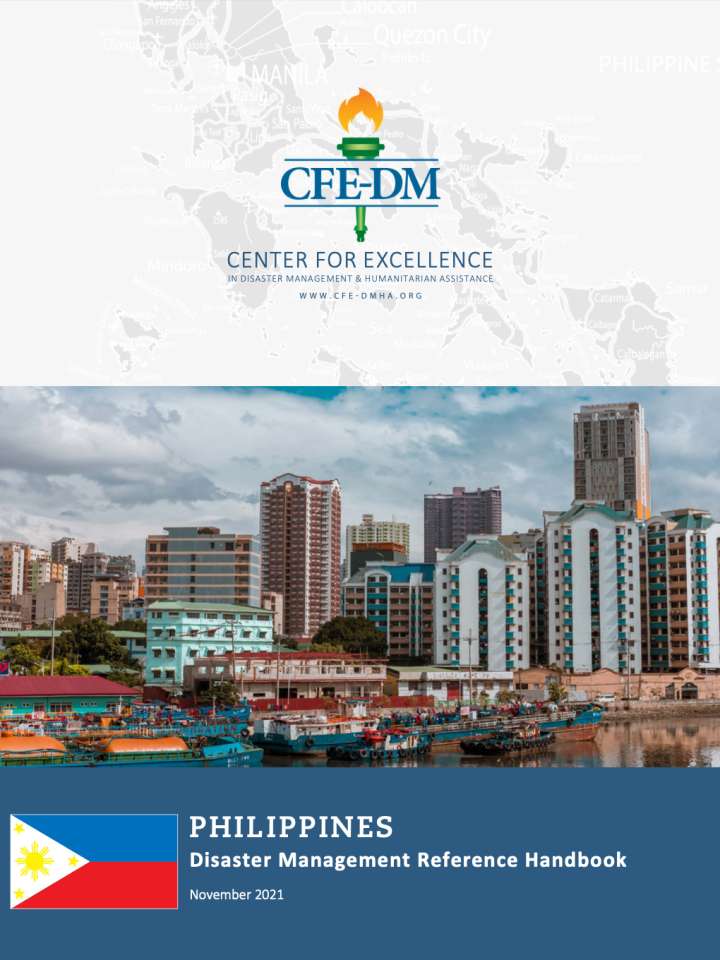Philippines disaster management reference handbook 2021
This is the Disaster Management Reference Handbook 2021 for the Philippines. The Philippines’ location on the “Pacific Ring of Fire” and along the Pacific typhoon belt mean that the country experiences many forms of natural disasters such as typhoons, earthquakes, floods, volcanic eruptions, landslides, and fires. The devastation of Typhoon Haiyan in 2013 spurred the Philippines to further develop its disaster management structures and resources by improving communication and institutionalizing roles and responsibilities for national and international players. Thus, more recent floods, typhoons, and landslides have seen improved communication and coordination that mitigated impacts on lives and livelihoods.
The document concludes that the Philippines rank as the ninth most disaster-prone country in the world in the 2020 World Risk Index, and it was the fourth most at risk country in the Long-Term Climate Risk Index based on data from 2000-2019. Due to the country’s proximity to the “Pacific Ring of Fire” and its location along the Pacific typhoon belt, the Philippines experiences many forms of natural disasters. For example, in an average year, the country experiences 20 typhoons, five of which are destructive. It experienced its most destructive disaster in recorded history in 2013 when Typhoon Haiyan struck; the storm affected 14 million people and claimed at least 6,000 lives.
Explore further
